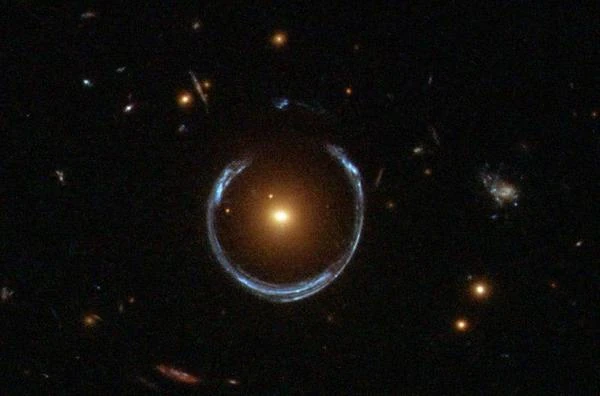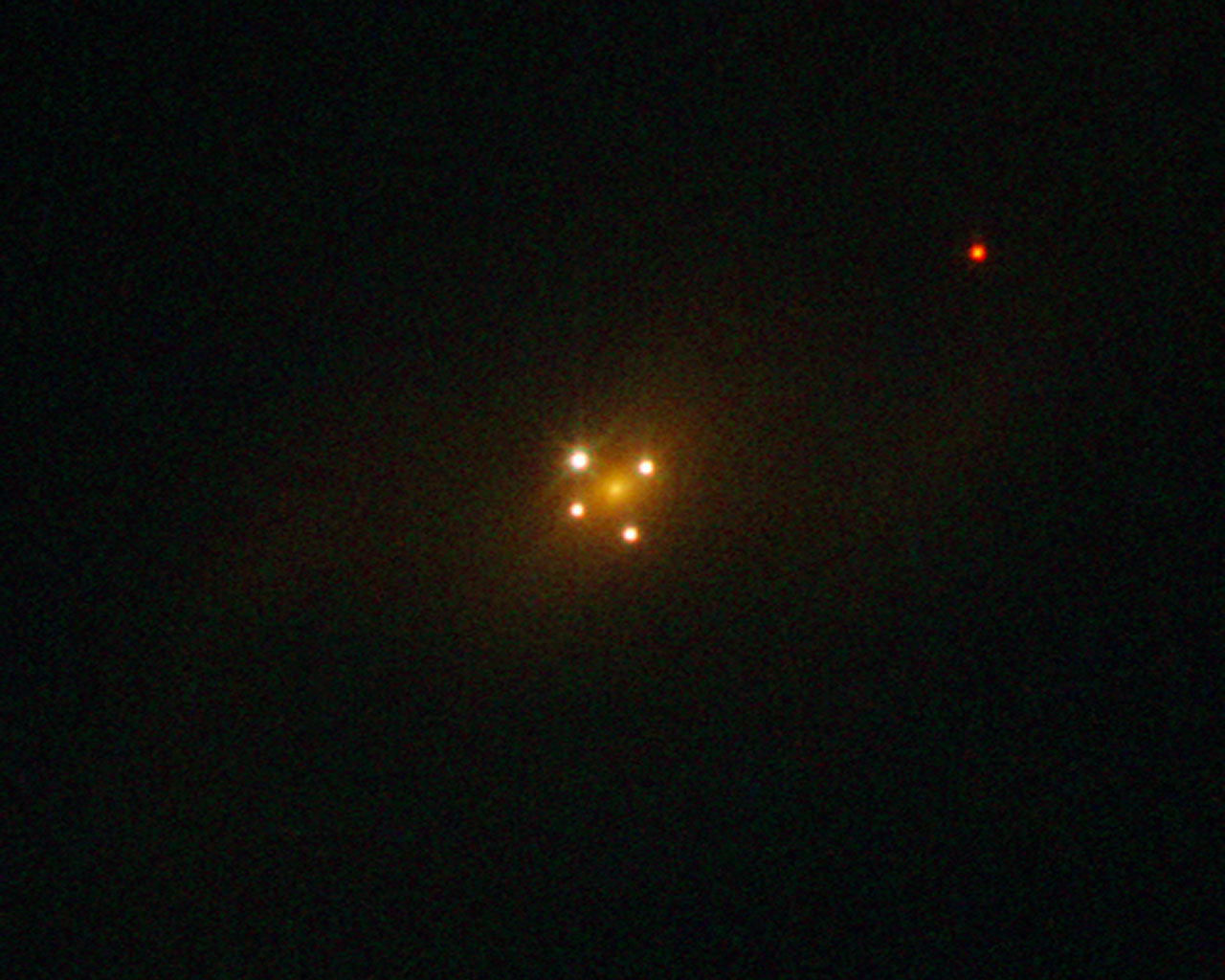
Image description: A nearly complete ring of strange blue stretched objects, spread out in a circle but are just multiple views of a single galaxy. The gravity of the bright red galaxy (in the center) has distorted the light of a much more distant blue galaxy behind it. Thanks to the almost perfect alignment of the background galaxy and the foreground galaxy, the Hubble telescope was able to photograph a circle. These rings are called Einstein Rings. Credit: public domain. NASA (Public domain).
Einstein Rings, also known as Einstein Crosses, are a fascinating optical phenomenon predicted by Albert Einstein's theory of general relativity. This phenomenon occurs when the light from a distant source, such as a galaxy or a star, is bent by the gravity of a massive object located between the observer and the light source. This bending of light, known as gravitational lensing, creates a ring-shaped image around the massive object.
The effect of gravitational lensing is due to the curvature of spacetime caused by the mass of the intervening object. When light passes near this object, it follows a curved path, resulting in a distorted image of the light source. If the alignment between the observer, the massive object, and the light source is perfect, the distorted image takes the shape of a complete ring.
Einstein Rings are rare and difficult to observe due to the very specific conditions required for their formation. However, they provide valuable information about the distribution of matter in the universe, including dark matter, and allow for the testing of the predictions of general relativity.
For an Einstein Ring to form, several conditions must be met:
When these conditions are met, the light from the distant source is bent by the gravity of the massive object, creating a ring-shaped image around this object. The size and shape of the ring depend on the mass and the distribution of matter in the intervening object.
Einstein Rings were first observed in 1988 by astronomer Jacqueline Hewitt (1958-) from MIT and her colleagues. Since then, several other examples have been discovered through high-resolution observations made with space telescopes like the Hubble Space Telescope.
These observations have helped to better understand the distribution of matter in galaxies and clusters of galaxies, as well as to test the predictions of general relativity. Einstein Rings are also used to study dark matter, an invisible form of matter that can only be detected through its gravitational effects.

Image description: The galaxy UZC J224030.2 032131 taken by the Hubble Telescope (NASA / ESA) and the Einstein Cross. The nucleus of the galaxy is the faint, diffuse object located at the center of the cross-shaped structure. The powerful gravity of the galaxy acts as a lens that bends and amplifies the light of the quasar behind it, producing a quadruple image of the distant object. The quasar is located 11 billion light-years away from us in the direction of the constellation Pegasus, seen as it was about 11 billion years ago. The galaxy is about 1 billion light-years away. The alignment between the two objects is remarkable (0.05 arcseconds), which explains why such a visual structure can be observed.
Einstein Rings have numerous applications in astrophysics. They allow for the measurement of the mass of massive objects, the mapping of the distribution of dark matter, and the testing of theories of gravity. Additionally, they can be used to study the properties of distant light sources, such as galaxies and quasars.
Observations of Einstein Rings also contribute to our understanding of the evolution of the universe. By studying the bending of light by massive objects at different cosmic epochs, astronomers can gain insights into the structure and evolution of galaxies and clusters of galaxies.
Einstein Rings are a fascinating optical phenomenon that offers unique perspectives on the distribution of matter in the universe and the properties of distant light sources. Although rare and difficult to observe, they provide valuable information for testing theories of gravity and better understanding the evolution of the universe.
Future observations with even more powerful telescopes, such as the James Webb Space Telescope, promise to reveal even more details about these phenomena and contribute to our understanding of the universe.